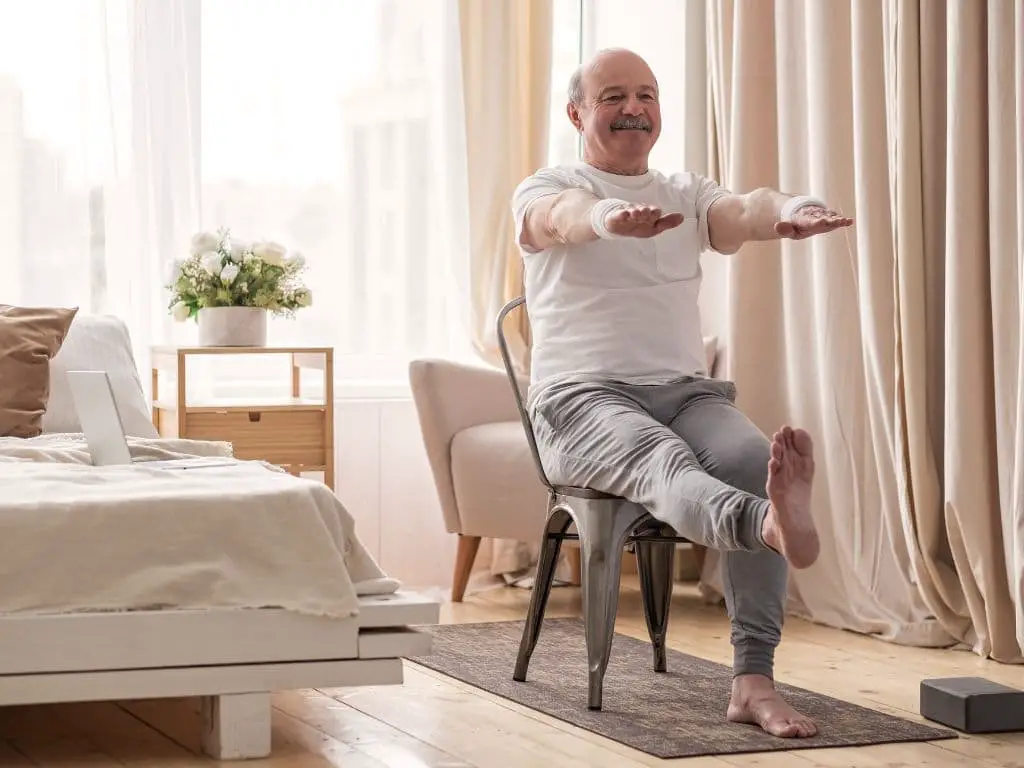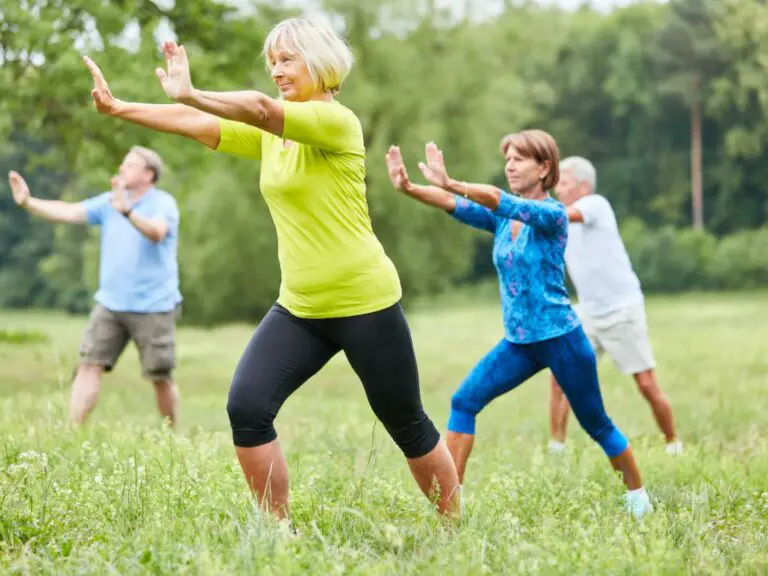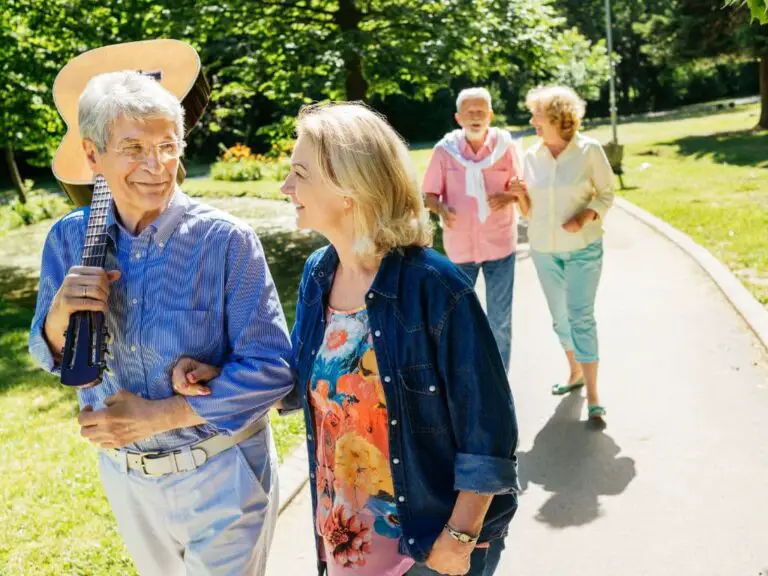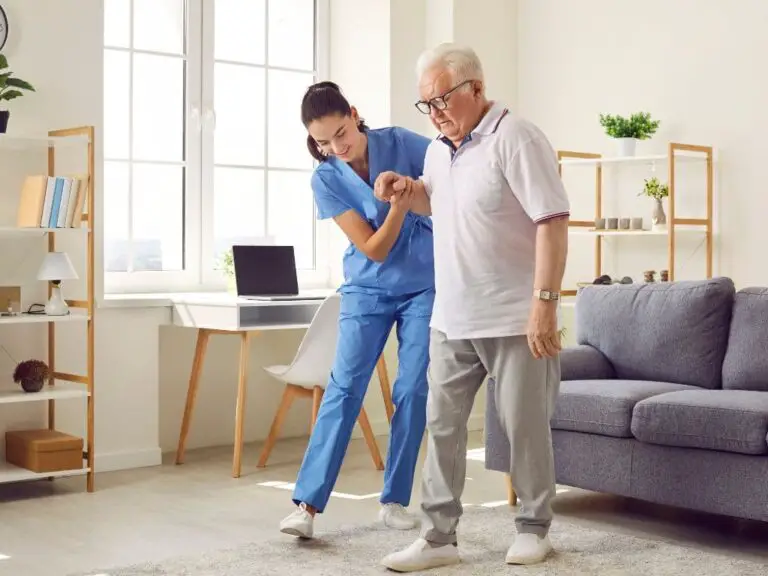Why Do Old People Have Trouble Getting Out of a Chair?
Getting in and out of a chair is a fundamental skill for mobility and independence as we age. However, many older adults struggle with this basic motion due to age-related muscle weakness, joint pain from conditions like arthritis, and other health issues. Difficulty standing up from a seated position can lead to falls and injuries that threaten seniors’ quality of life.
Older adults may have difficulty getting out of a chair due to age-related health conditions like arthritis, osteoporosis, and degenerative disc disease causing muscle weakness and joint pain. These conditions impact mobility, making everyday tasks challenging and increasing the risk of falls. Regular exercise, physiotherapy, home modifications, and proper medication can help maintain their mobility.
Creating a safe environment, focusing on exercise and rehabilitation, and managing medications can help older adults maintain the mobility and independence essential to dignity and well-being in their later years.

This article will explore the common causes of trouble getting out of chairs in the elderly, fall prevention strategies, and ways to enable seniors to preserve this crucial ability needed for daily functioning and avoiding injury.
Why is Getting Out of a Chair a Fundamental Mobility Skill for Older Adults?
The ability to get in and out of a chair with ease is a fundamental mobility skill that is essential for independence and quality of life as we age. Being able to stand up and sit down allows older adults to perform basic daily activities like getting dressed, eating meals, using the bathroom, and moving around their home. Difficulty with this basic motion is often one of the first signs of declining mobility in seniors.
As we get older, age-related changes in the body can make getting out of a chair more challenging. Two key factors are muscle weakness and joint pain. Muscle mass naturally decreases with age, while joint pain from arthritis, osteoporosis, and degenerative disc disease becomes more common. The combination of weaker muscles and stiff, painful joints makes it harder to muster the strength and flexibility needed to stand up from a seated position. Maintaining this mobility is crucial for preserving independence and avoiding injury as we grow older.
What are the Common Health Conditions that Affect Mobility in Older Adults?
A number of age-related health conditions can negatively impact an older adult’s mobility and make everyday tasks like getting out of a chair difficult.
Arthritis causes swelling, pain, and stiffness in the joints, which reduces range of motion and flexibility. This makes it harder to bear weight, shift position, and coordinate the motions needed to stand up.
Osteoporosis, which causes bones to become brittle and fracture more easily, can lead to vertebral fractures that cause back pain and loss of height. This impairs balance and makes it harder to straighten the back when rising from a chair.
Degenerative disc disease, as spinal discs wear down, can cause back pain and nerve compression. This leads to weakness, numbness, and unsteadiness, which undermine efforts to rise from a seated position.
Other common health conditions like Parkinson’s disease, stroke, heart disease, diabetes, and obesity can also contribute to mobility limitations that affect standing up from a chair. Anxiety and depression may exacerbate these difficulties by sapping motivation and energy levels.
How Can Mobility Problems Lead to Falls and Injuries in Older Adults?
Difficulty standing up from a chair significantly increases an older adult’s risk of falling. Struggling to rise from a seated position can lead to falls that cause serious injuries like fractures, head trauma, and wounds requiring stitches or surgery.
Those unable to easily stand up may resort to unsafe maneuvers like excessive momentum or pulling themselves up unsafely. Even just the act of attempting to stand up can be taxing for older adults. Loss of balance, dizziness, and unsteadiness during the motion can result in falls that have devastating physical and psychological consequences.
Falls threaten seniors’ independence and quality of life. They are the leading cause of injury deaths among those 65 and older. Maintaining the ability to safely transition from sitting to standing is essential to preserving mobility, avoiding injury, and staying independent as we age.
What Can Be Done to Help Older Adults Maintain Their Mobility?
While age-related mobility limitations are inevitable to some degree, there are ways to help seniors preserve their ability to get out of a chair more easily.
Exercise programs focusing on flexibility, balance, and leg strength can keep joints limber and muscles strong. Physical therapy can provide personalized treatment to improve range of motion and address specific impairments.
Proper medication management, physical aids like canes or walkers, and bracing or splinting joints can help alleviate pain that impedes mobility. Weight loss for overweight individuals takes pressure off stressed joints.
Home modifications like installing grab bars, benches, and chairs with armrests and optimized height create an environment tailored to limited mobility. Building strength and adapting surroundings enable safer, less strenuous transitions between sitting and standing.
How Can a Safe Environment Be Created for Older Adults with Mobility Issues?
Creating a safe environment is crucial for protecting the independence and quality of life of seniors with limited mobility. This involves taking measures to prevent falls and make sitting and standing easier.
It’s important to remove obstacles and clutter that could lead to tripping. Furniture and walkways should be arranged to allow clear paths between locations. Grab bars and railings provide stability and support during transitions.
Chairs should be at an optimal height that allows older adults to rise with minimal effort. Seat heights can be raised by adding cushion pads. Chairs with armrests also provide leverage when standing up or sitting down.
Proper lighting eliminates shadows and glare that can obscure trip hazards. Non-slip surfaces, like carpet with firm padding, prevent slips that could lead to falls. Adequate assistive devices and accessibility features allow safe, independent mobility within the home environment.
How Can Falls Be Prevented in Older Adults?
Falls represent a major threat to the health and quality of life of seniors. Preventing falls requires a multipronged approach:
- Recognizing early signs and symptoms like weakness, dizziness, and balance issues
- Intervening with exercise programs focusing on strength, balance, and flexibility
- Managing medications and medical conditions that may contribute to fall risk
- Ensuring adequate nutrition and weight loss, if necessary
- Making home modifications to improve safety and accessibility
- Providing appropriate mobility aids and devices
If an older adult does fall, take these steps: check for injuries, monitor for signs of trauma like head injury, help the person get up to prevent ‘long lies’ if unhurt, and review what caused the fall to prevent future occurrences. With diligence and preparation, many falls can be anticipated and averted before they happen.
In summary, difficulty getting out of chairs affects many older adults, but a proactive approach focusing on exercise, home modifications, medication management, and fall prevention can help seniors maintain mobility and independence. Prioritizing safe, accessible environments and self-care preserves quality of life and dignity well into old age.
Frequently Asked Questions
-
Why do old people have trouble getting out of a chair?
Many factors can cause problems with sitting or standing, such as rheumatoid and osteoarthritis. This issue could also be caused by age-related muscle loss in seniors, particularly if they don’t exercise enough or aren’t getting enough protein.
-
Can a 70 year old woman regain muscle mass?
Seniors can still bulk up on muscle by pressing iron. As we age, our muscle mass drops at astonishing rates. Researchers found that lifting weights can help people over 50 not only preserve but even increase muscle mass.
-
How do you get rid of flabby lower stomach?
Cardio, yoga and crunches can tone and strengthen your legs, but won’t eliminate fat. You can only lose stomach fat if you lose all fat. This can be achieved by creating a calorie deficit. Healthy eating should not be difficult.
-
Can hardly walk after sitting?
Plantar fasciitis is often characterized by stiffening of the feet after sitting or in the morning. Plantar fascia, a thick ligament that runs from your heel to the ball of the foot, is what causes stiffness in the feet. When this ligament gets inflamed, it can lead to plantar fasciitis. Plantar fasciitis can be a common condition in runners and other athletes.
-
What causes legs to give way walking?
Muscle issues can cause leg weakness, particularly during exercise. This is not a cause to be alarm. If your legs become sloppy and you feel unable to control the situation, it is likely that the spine nerves are the problem. Our brain sends signals to our legs via the spine nerves.
-
Can heart problems cause weakness in legs?
Signs and symptoms of heart failure include shortness of breath when you are active or lying down. Fatigue and weakness. Severe swelling in the feet, legs and ankles.
-
Can an 80 year old build muscle?
Seniors can still bulk up on muscle by pressing iron. As we age, our muscle mass drops at astonishing rates. Researchers found that lifting weights can help people over 50 not only preserve but even increase muscle mass.
-
Why is it hard to walk after sitting?
Plantar fasciitis is often characterized by stiffened feet after sitting or in the morning. Plantar fascia, a thick ligament that runs from your heel to your ball on your bottom foot is what causes stiffness. When this ligament gets inflamed, it can lead to plantar fasciitis. Plantar fasciitis can be a common condition in runners and other athletes.
-
What is the one leg test for hip arthritis?
The One-Legged Test – Stand on one leg. Stand on one leg for at most a minute. If you have trouble standing, or if your hips are aching, consider hip replacement. Contact Dr.
-
How do you lose belly fat while sitting?
Crunches while sitting You can sit straight up on the chair, but don’t rest your head against the backrest. Place your feet together and rest your fingers between your ears.







